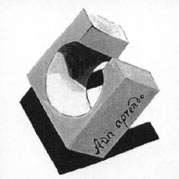
Welcome to the Centre for Aldous Huxley Studies (CAHS)
This original CAHS site was designed by Joel Deshaye, in consultation with Uwe Rasch, M.A., and Prof Dr Bernfried Nugel, in 2003.
The design visually refers to a description of the moksha-medicine experience as described in Huxley’s 1962 novel, Island. This description, which serves as a footer on the first page, shows Will Farnaby’s reaction to looking at a bookshelf while under the hallucinogenic influence of the drug:
"And what strange jewellery! Narrow slabs of emerald and topaz, of ruby and sapphire and lapis lazuli, blazing away, row above row, like so many bricks in a wall of the New Jerusalem. Then—at the end, not in the beginning—came the word. In the beginning were the jewels, the stained-glass windows, the walls of paradise. It was only now, at long last, that the word ‘book-case’ presented itself for consideration."
The image shows Huxley sitting on the wall near his California home in the Hollywood hills in 1959. The original photo, by Rose Nys, included Laura Huxley reclining on a chair, but the image was edited so that the bricks could extend to the left and become progressively less substantial. We can see Huxley lightly seated on the bricks. Considering his reference, above, to the bricks being like books on a shelf, he seems very comfortable there. One can imagine his love of books and his appreciation of the cloudy greyness of an ambiguous reality. The wall suggests the impermanence of objects like books; the colored psychedelic fog (a collage of mathematically derived Mandelbrot fractals) represents Huxley’s dual interest in hallucinogenic drugs and science. The bricks and fog show two of Huxley’s learning strategies: the use of the encyclopedias for hard facts and the use of mystical or chemical methods for subjective truths.
Laura Huxley has approved the use of this image of Aldous.



